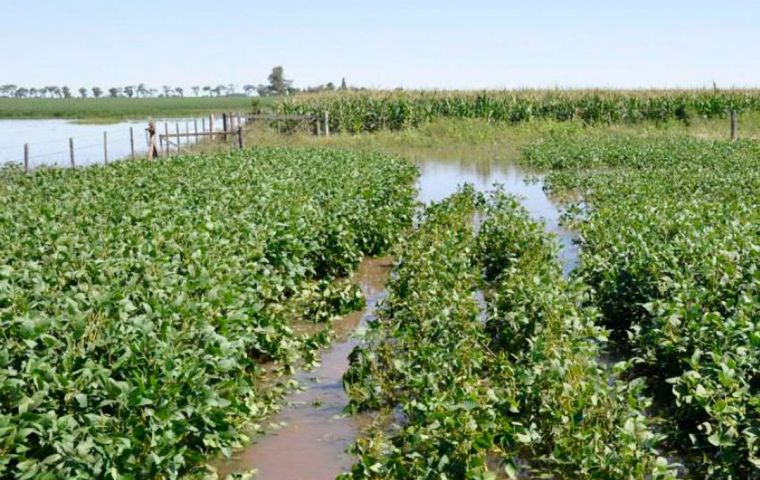MercoPress. South Atlantic News Agency
Abundant rains in Argentina's soy belt help expectations of a good harvest
 The rain has been good in key parts of the Pampas including northern Buenos Aires, and southern Cordoba, Santa Fe and Entre Rios provinces
The rain has been good in key parts of the Pampas including northern Buenos Aires, and southern Cordoba, Santa Fe and Entre Rios provinces Rainstorms are sweeping Argentina’s soy belt, building soil moisture needed to guarantee good yields when crops blossom in February and providing some cushion for China to buy should its trade war with the United States continue to limit U.S. supplies.
Bolstered by strong showers in key parts of the Pampas farm region, which meteorologists expect to continue over the week ahead, Argentina’s harvest should reach 55.5 million tons, according to the U.S. Department of Agriculture. That would mark a sharp recovery from the 2017/18 season, which was walloped by a drought that reduced the harvest to an anemic 37.8 million tons.
Argentina usually starts harvesting soybeans during March and the country’s soybean exports to China could jump to a record 14 million tons if the U.S.-China conflict persists, according to the Rosario grains exchange. China is the destination for about 95% of Argentina’s soybean shipments.
The rain has been good in key parts of the Pampas including northern Buenos Aires, and southern Cordoba, Santa Fe and Entre Rios provinces. Some parts of southern Buenos Aires remain dry, but not enough to cause alarm, said German Heinzenknecht, weather specialist with the Applied Climatology consultancy.
Some areas in Santa Fe have been hit by hail storms which have caused farmers to replant. “But that’s not a large-scale problem. The net effect of the rains has been positive,” Heinzenknecht said.
This season’s soy area is more than 70% planted, according to the Buenos Aires Grains Exchange, which expects a harvest of 53 million tons versus 35 million in 2017/18.
With 2 million hectares of this year’s soy crop planted in low-lying areas vulnerable to floods, any possible threat to this year’s soybean crop would not come from too little rain, but too much, Eduardo Sierra, climate consultant to the Buenos Aires Exchange explained.
“At this point everything indicates a crop of 53 million tons; 50 million if there is a lot of flooding and a ceiling of 56 million if conditions continue to be good,” Sierra said.




Top Comments
Disclaimer & comment rulesCommenting for this story is now closed.
If you have a Facebook account, become a fan and comment on our Facebook Page!